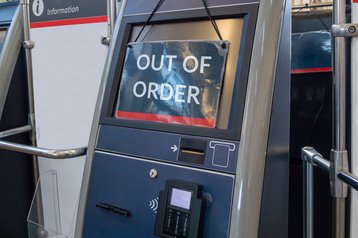Global enterprises are falling into the trap of becoming sidetracked when it comes to reducing the cost of downtime. Understandably, many organizations work to reduce unplanned downtime, which, for large enterprises, can cost upwards of $1 million an hour. For example, Amazon disclosed that when they experienced a 13-minute unplanned downtime in 2021, they estimated that it may have cost them $203,577 each minute, or $2,646,501 in total.
On the other hand, when it comes to planned downtime, organizations view it as inevitable – a fixed cost they’re unable to reduce.
Planned downtime is critical to performing maintenance such as security patches, systems updates, and more. In such instances, systems need to reboot or go offline in order to perform the necessary upkeep of IT infrastructure. Naturally, this causes significant operational disruption. However, what organizations often overlook is that there is a way around this perceived inevitability.
Misunderstandings about downtime
Misconceptions about planned and unplanned downtime can arise due to misunderstandings or incomplete knowledge about these terms. Here are a few common misconceptions associated with planned and unplanned downtime:
- Planned downtime is unnecessary: Some may assume that planned downtime is avoidable. However, planned downtime is often essential for system maintenance, upgrades, or repairs. It allows businesses to prevent future failures, improve performance, and ensure the overall reliability of their systems.
- Unplanned downtime only occurs due to external factors: While external factors like power outages or natural disasters can indeed cause unplanned downtime, internal factors can also contribute to it. Equipment failures, software glitches, human error, and negligence, or network issues can lead to unexpected system outages.
- Planned downtime cannot be accurately estimated: Although planned downtime is scheduled, without the right tools, it can be challenging to predict the exact duration required for maintenance or upgrades. Factors such as unforeseen complications, technical challenges, or the need for additional repairs can extend the planned downtime beyond the initial estimate. For this reason, IT teams need to be aware of the latest technology.
Organizations have long believed that the costs of downtimes, planned or unplanned, are not accurately factored into business strategies.
Unplanned outages, for example, may cost companies significantly more than planned downtime. Dunn & Bradstreet stated that 59 percent of Fortune 500 companies experience a minimum of 1.6 hours of unplanned downtime per week. Direct costs from unplanned downtime include lost revenue, data loss, recovery costs, and fines and penalties from regulatory bodies that violate service-level agreements. Indirect costs include damage to the service provider’s reputation, lost productivity, and lost opportunities.
To put this into perspective, there is a Fortune 100 Oil & Gas company that recently discovered just how costly planned outages can be against unplanned. The planned downtime of its ERP systems during a turnaround event (TAR) – a planned period of time when operations are turned off in order to conduct inspections and repairs –was exorbitant. Without the right tools, TARs can take between two weeks and two months, costing the company millions in lost revenue per day. To mitigate these costs, the plant’s ERP systems must experience the least possible amount of planned downtime during the TAR, as they are critical to effectively managing the process and getting the plant back up and operational quickly.
With the right tools, the company could benefit from near-zero downtime maintenance events for their SAP systems while greatly minimizing lost revenue.
Reducing planned downtime with technology
According to a study by Forrester, IT directors at large US institutions estimate that planned downtime costs organizations on average $1.5 million per quarter and $5.6 million per year. Downtime, planned or not, can be a stressful event, but it doesn’t have to be, and when planned properly, it doesn’t have to take long.
When cloud automation is joined together with SAP configuration management, it can subsequently develop parallel landscapes, apply upgrades and patches, with little to no disruption. Technology provides the toolchains needed to perform common change operations with minimized downtime, reducing the time to plan and execute common changes to the SAP infrastructure, thereby reducing costs.
Teams face challenges within SAP as the architecture started as an on-premises monolithic platform. It’s critical to implement the best and most up-to-date automation and orchestration tools to run Cloud infrastructure configurations and capture specific application configurations.
A change in attitude
Planned downtime is becoming a thing of the past. Armed with the knowledge that there is another way, IT teams, and leaders will no longer view planned outages as a shocking and fearful cost. Companies with this change in mindset will find themselves on the pathway to greater business agility and boost cost savings, waving goodbye to the time of outages lasting days, weeks, and months.
It’s time for businesses to realize that they can drastically reduce the planned downtime window without compromising on operations maintenance.








